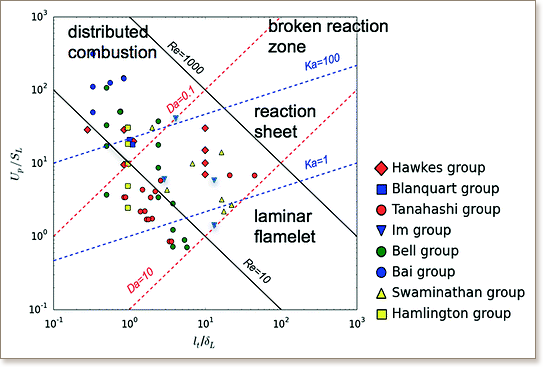


Direct numerical simulations (DNS) of turbulent combustion have evolved tremendously in the past decades, thanks to the rapid advances in high performance computing technology. Today’s DNS is capable of incorporating detailed reaction mechanisms and transport properties, with physical parameter ranges approaching laboratory scale flames, thereby allowing direct comparison and cross-validation against laser diagnostic measurements. While these developments have led to significantly improved understanding of fundamental turbulent flame characteristics, there are increasing demands to explore combustion regimes at higher levels of turbulent Reynolds (Re) and Karlovitz (Ka) numbers, with a practical interest in new combustion engines driving towards higher efficiencies and lower emissions. This chapter attempts to provide a brief historical review of the progress in DNS of turbulent combustion during the past decades. Major scientific accomplishments and contributions towards fundamental understanding of turbulent combustion will be summarized and future challenges and research needs will be proposed.